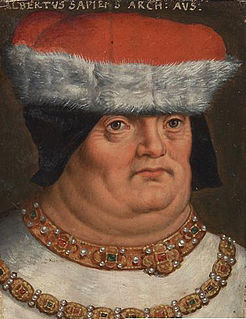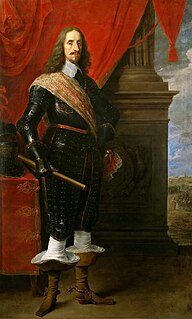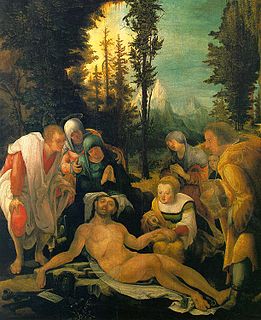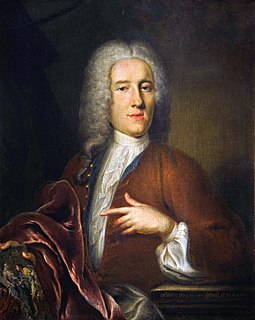
The Diocese of Passau is a Roman Catholic diocese in Germany that is a suffragan of the Archdiocese of Munich and Freising. It should not be confused with the Prince-Bishopric of Passau, an ecclesiastical principality that existed for centuries until it was secularized in 1803. The diocese covers an area of 5,442 km².

Albert II, known as the Wise or the Lame, a member of the House of Habsburg, was Duke of Austria and Styria from 1330, as well as Duke of Carinthia from 1335 until his death.

The Danube School or Donau School was a circle of painters of the first third of the 16th century in Bavaria and Austria. Many also were innovative printmakers, usually in etching. They were among the first painters to regularly use pure landscape painting, and their figures, influenced by Matthias Grünewald, are often highly expressive, if not expressionist. They show little Italian influence, and also represent a decisive break with the high finish of Northern Renaissance painting, using a more painterly style that was in many ways ahead of its time.

Archduke Leopold Wilhelm of Austria was an Austrian military commander, Governor of the Spanish Netherlands from 1647 to 1656, and a patron of the arts.

Cagnes-sur-Mer is a picturesque French Riviera town known for its forests, pebble beaches, and seaside charm in the Alpes-Maritimes department in the Provence-Alpes-Côte d'Azur region in southeastern France. It is also home to the only horse hippodrome in the French Riviera, which draws people from all over for its horse races.

Wolf Huber was an Austrian painter, printmaker, and architect, a leading member of the Danube School.
The year 1507 in art involved some significant events and new works.
The decade of the 1440s in art involved some significant events.
The year 1545 in art involved some significant events and new works.

Franz Bronstert was a German engineer and painter.

Michelangelo Unterberger, also Michael Angelo Unterberger and Michelangelo Unterperger was a South Tyrolean painter in the Baroque style.

Johann Georg Platzer (1704–1761) was a prolific Austrian Rococo painter and draughtsman.

Joseph Bergler the Younger was a painter, author of numerous etchings, and director of the Prague Academy.
Georg Philipp Wörlen was a German painter, particularly associated with Passau, Bavaria, Germany.

Ludwig von Baldass was an Austrian art historian, professor and acclaimed author who specialised in Early Netherlandish painting. He studied under Max Dvořák at the University of Vienna and began to lecture there in 1926, gaining the position of professor in 1934. Von Baldass' 1942 treatise on Hans Memling was instrumental in the re-evaluation of his artistic importance. Other publications include articles and books on Jan van Eyck (1952), Hieronymus Bosch (1953), Giorgione and Albrecht Altdorfer.
Willem Forchondt, or Guillam Forchondt the Elder (1608–1678) was a Flemish painter, cabinet maker and art dealer. His international art dealership played an important role in the spread of Flemish Baroque art in Europe and South-America. He changed the relationship between art dealer and artist by becoming himself involved in the organisation of the art production process.
Joseph Bergler the Elder (1718–1788) was an Austrian sculptor.
Heinrich von Berg was Bishop of Passau from 1169 to 1171 and Bishop of Würzburg from 1191 to 1197.















